Fen Zhou
IEEE
A Novel Initialization Method for HybridUnderwater Optical Acoustic Networks
Sep 29, 2021



Abstract:To satisfy the high data rate requirement andreliable transmission demands in underwater scenarios, it isdesirable to construct an efficient hybrid underwater opticalacoustic network (UWOAN) architecture by considering the keyfeatures and critical needs of underwater terminals. In UWOANs,optical uplinks and acoustic downlinks are configured betweenunderwater nodes (UWNs) and the base station (BS), wherethe optical beam transmits the high data rate traffic to theBS, while the acoustic waves carry the control information torealize the network management. In this paper, we focus onsolving the network initializing problem in UWOANs, which isa challenging task due to the lack of GPS service and limiteddevice payload in underwater environments. To this end, weleverage acoustic waves for node localization and propose anovel network initialization method, which consists of UWNidentification, discovery, localization, as well as decomposition.Numerical simulations are also conducted to verify the proposedinitialization method.
Maximizing Revenue with Adaptive Modulation and Multiple FECs in Flexible Optical Networks
Jun 14, 2021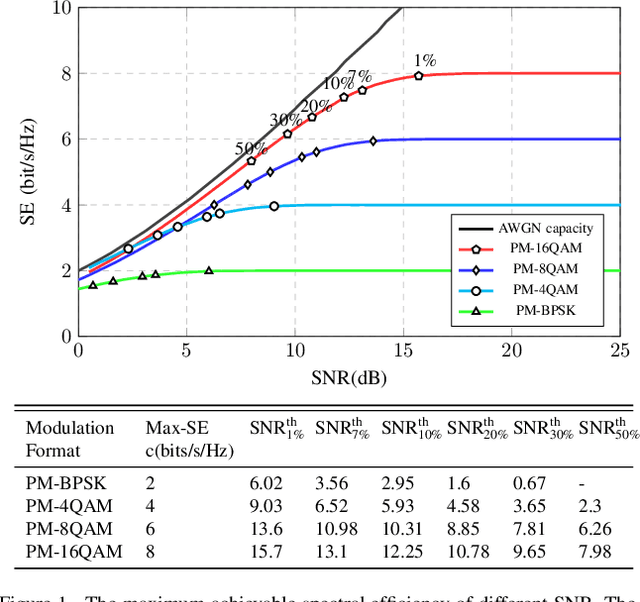
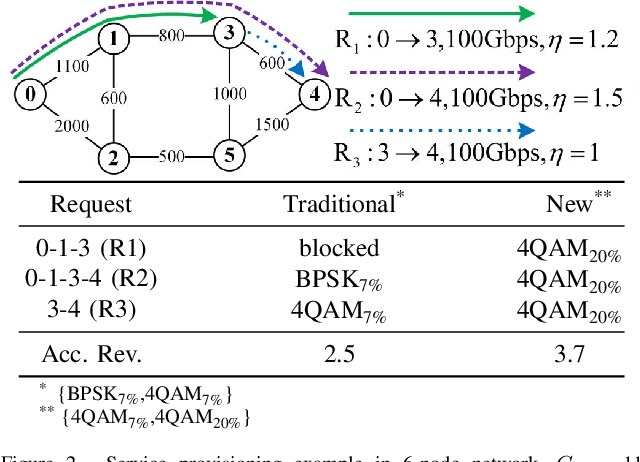


Abstract:Flexible optical networks (FONs) are being adopted to accommodate the increasingly heterogeneous traffic in today's Internet. However, in presence of high traffic load, not all offered traffic can be satisfied at all time. As carried traffic load brings revenues to operators, traffic blocking due to limited spectrum resource leads to revenue losses. In this study, given a set of traffic requests to be provisioned, we consider the problem of maximizing operator's revenue, subject to limited spectrum resource and physical layer impairments (PLIs), namely amplified spontaneous emission noise (ASE), self-channel interference (SCI), cross-channel interference (XCI), and node crosstalk. In FONs, adaptive modulation, multiple FEC, and the tuning of power spectrum density (PSD) can be effectively employed to mitigate the impact of PLIs. Hence, in our study, we propose a universal bandwidth-related impairment evaluation model based on channel bandwidth, which allows a performance analysis for different PSD, FEC and modulations. Leveraging this PLI model and a piecewise linear fitting function, we succeed to formulate the revenue maximization problem as a mixed integer linear program. Then, to solve the problem on larger network instances, a fast two-phase heuristic algorithm is also proposed, which is shown to be near-optimal for revenue maximization. Through simulations, we demonstrate that using adaptive modulation enables to significantly increase revenues in the scenario of high signal-to-noise ratio (SNR), where the revenue can even be doubled for high traffic load, while using multiple FECs is more profitable for scenarios with low SNR.
Throughput Maximization Leveraging Just-Enough SNR Margin and Channel Spacing Optimization
Jun 14, 2021



Abstract:Flexible optical network is a promising technology to accommodate high-capacity demands in next-generation networks. To ensure uninterrupted communication, existing lightpath provisioning schemes are mainly done with the assumption of worst-case resource under-provisioning and fixed channel spacing, which preserves an excessive signal-to-noise ratio (SNR) margin. However, under a resource over-provisioning scenario, the excessive SNR margin restricts the transmission bit-rate, leading to physical layer resource waste and stranded transmission capacity. To tackle this challenging problem, we leverage an iterative feedback tuning algorithm to provide a just-enough SNR margin, so as to maximize the network throughput. Specifically, the proposed algorithm is implemented in three steps. First, starting from the high SNR margin setup, we establish an integer linear programming model as well as a heuristic algorithm to maximize the network throughput by solving the problem of routing, modulation format, forward error correction, baud-rate selection, and spectrum assignment. Second, we optimize the channel spacing of the lightpaths obtained from the previous step, thereby increasing the available physical layer resources. Finally, we iteratively reduce the SNR margin of each lightpath until the network throughput cannot be increased. Through numerical simulations, we confirm the throughput improvement in different networks and with different baud-rates. In particular, we find that our algorithm enables over 20\% relative gain when network resource is over-provisioned, compared to the traditional method preserving an excessive SNR margin.
Optimisation using Natural Language Processing: Personalized Tour Recommendation for Museums
Jan 06, 2015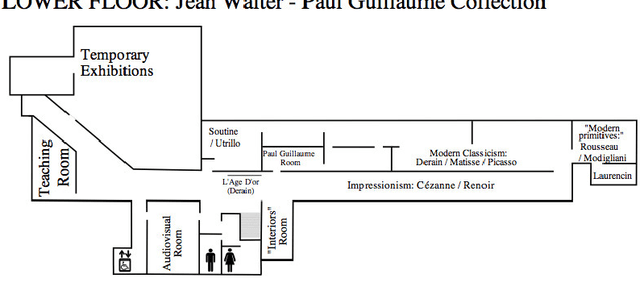
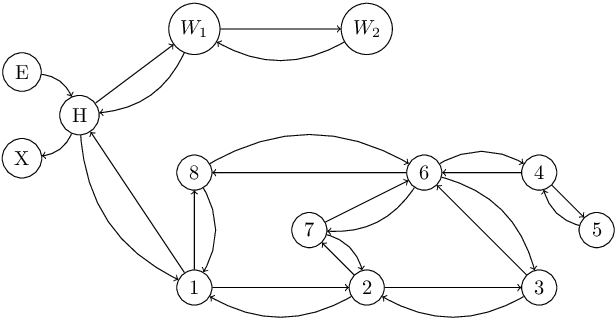
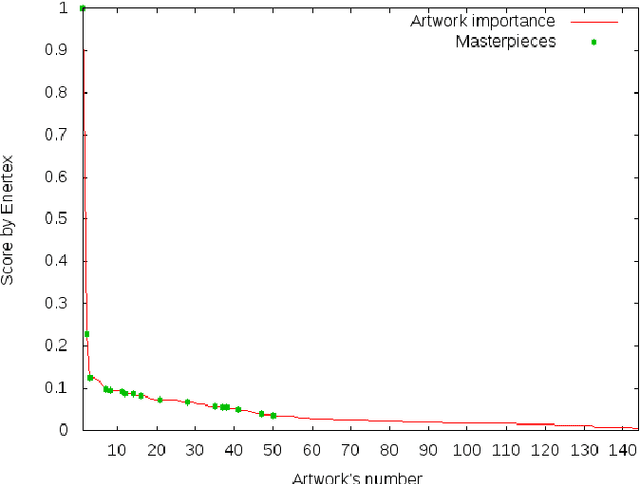
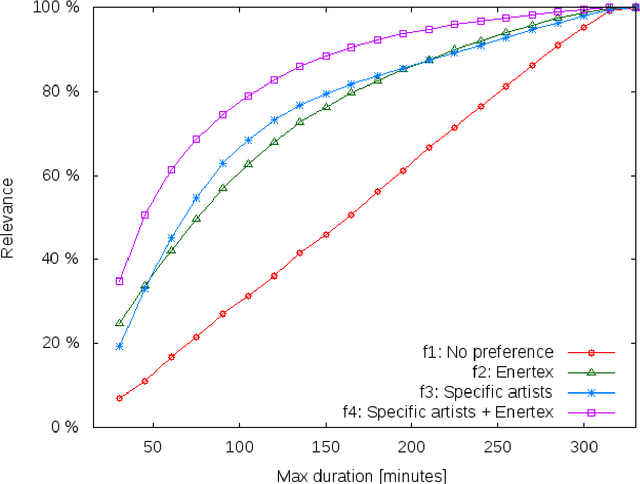
Abstract:This paper proposes a new method to provide personalized tour recommendation for museum visits. It combines an optimization of preference criteria of visitors with an automatic extraction of artwork importance from museum information based on Natural Language Processing using textual energy. This project includes researchers from computer and social sciences. Some results are obtained with numerical experiments. They show that our model clearly improves the satisfaction of the visitor who follows the proposed tour. This work foreshadows some interesting outcomes and applications about on-demand personalized visit of museums in a very near future.
 Add to Chrome
Add to Chrome Add to Firefox
Add to Firefox Add to Edge
Add to Edge